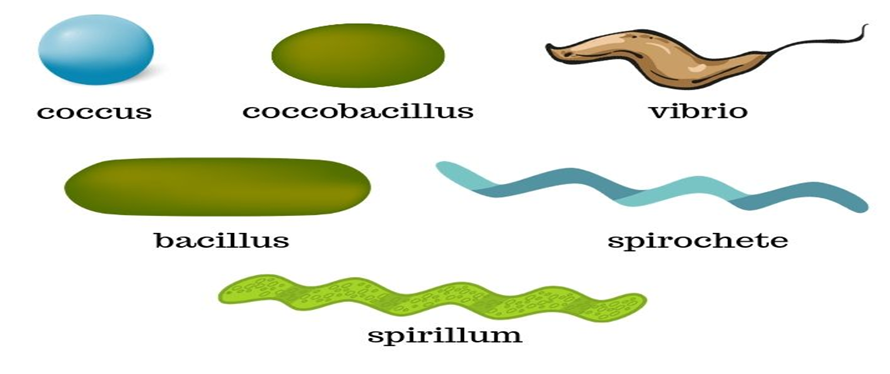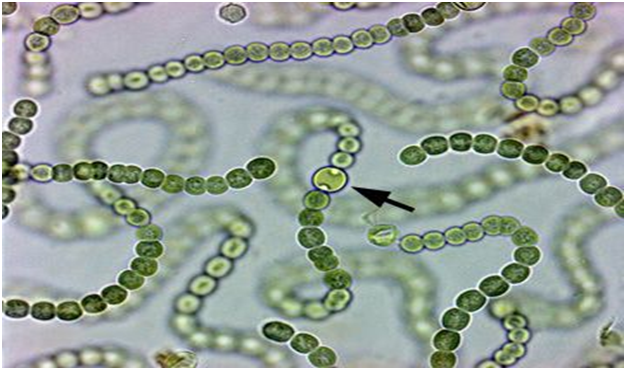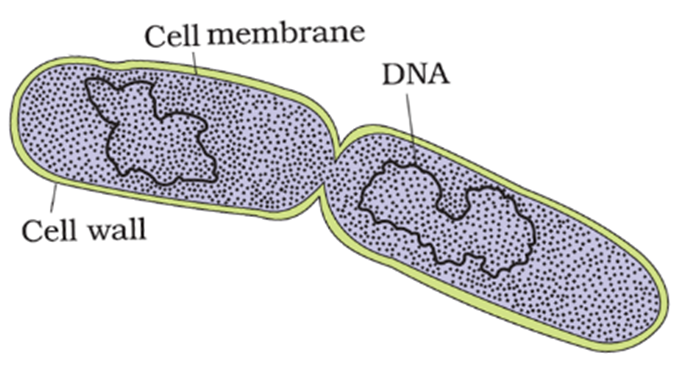Kingdom Monera
Monera is a biological kingdom that is solely made up of prokaryotes. Their DNA is not enclosed within the nucleus as these single-celled organisms lack a true nucleus. The Monerans also do not possess any membrane-bound organelles.
The Kingdom Monera is made up entirely of bacteria. They are the most common microorganisms on the planet. Bacteria can be found practically anywhere. A handful of soil contains hundreds of bacteria. They also exist in harsh environments like hot springs, deserts, snow, and deep oceans, where only a few other species can survive. As parasites, many of them live in or on other organisms.
The spherical Coccus (pl.: cocci), the rod-shaped Bacillus (pl.: bacilli), the comma-shaped Vibrium (pl.: vibrio), and the spiral Spirillum are the four types of bacteria classified by their shape.

Although bacteria have a simple structure, their activity is extremely sophisticated. Bacteria, in comparison to many other creatures, have the greatest metabolic diversity.Some bacteria are autotrophic, meaning they produce their own nourishment from inorganic sources. They can be either photosynthetic or chemosynthetic autotrophs. The great majority of bacteria are heterotrophs, meaning they feed on dead organic matter or other species. Archaebacteria, Eubacteria, and Cyanobacteria are the three sub-kingdoms of the kingdom Monera.
A. Archaebacteria:
These bacteria are unique in that they survive in extremely salty environments (halophiles), hot springs (thermoacidophiles), and marshy environments (methanogens). Archaebacteria vary from other bacteria in that they have a unique cell wall construction that allows them to survive in harsh environments. Methanogens are bacteria that live in the guts of ruminant animals like cows and buffaloes and are responsible for the creation of methane (biogas) from their feces.
B. Eubacteria:
"True bacteria" is another name for Eubacteria. The existence of a hard cell wall and, if motile, a flagellum distinguishes them. A few bacteria have pili, which are small appendages on the cell surface that aid the bacterium in sexual reproduction. Pili also aids in the attachment of pathogens to their hosts. Depending on the type of the cell wall and the stain they take, they are classified as gram-positive or gram-negative.
C. Cyanobacteria:
Cyanobacteria are photosynthetic autotrophs with chlorophyll similar to green plants. They are unicellular, colonial, or filamentous algae that can be found in freshwater, marine, or terrestrial environments. Gelatinous sheath surrounds the colonies in general. Blooms are common in contaminated water bodies. Some of these species, such as Nostoc and Anabaena, can fix atmospheric nitrogen in specialized cells called heterocysts. Chemosynthetic autotrophic bacteria utilize the energy released by oxidizing inorganic compounds like nitrates, nitrites, and ammonia to produce ATP. They are vital in the recycling of nutrients such as nitrogen, phosphorus, iron, and sulfur.

In nature, heterotrophic bacteria are the most common. The majority of them are significant decomposers. Many of them have a major influence on human affairs.They aid in the creation of curd from milk, the manufacture of antibiotics, and the fixation of nitrogen in legume roots, among other things. Some of these are infections that harm humans, crops, farm animals, and pets. Bacterial infections such as cholera, typhoid, tetanus, and citrus canker are well-known. Bacteria mostly reproduce through fission. They may generate spores in unfavorable conditions. They also reproduce by adopting a rudimentary method of DNA transfer from one bacteria to the next, which is similar to sexual reproduction.

Mycoplasma are creatures that lack a cell wall entirely. They are the world's tiniest living cells, capable of surviving without oxygen. In animals and plants, many mycoplasmas are pathogenic.

 ACME SMART PUBLICATION
ACME SMART PUBLICATION
